
Hupmobile car cover is not just a makeshift tarp. With a classic Hupmobile, every time you put on the cover you are deciding how quickly the car will age over months and even seasons. When a car sits more than it drives, the real culprits are fine dust, vapor from the garage floor, pre-dawn dew point condensation, sunlight sneaking through windows, coastal salt or winter road salt. These quietly dull thin lacquer paint, tarnish chrome, print water rings along curved glass, and age old-school fabrics, leather, and wood veneer. A Hupmobile car cover that works on the right mechanisms will flip those disadvantages: the outer face sheds water so wet time is shorter, a micro-vented core gives vapor a way out, an ultra soft liner turns contact into a cushioned touch, and a light color face reflects radiation so the cabin stays cooler. This article goes straight to three pain points Hupmobile owners face: the need for full coverage during long storage, the need to protect a classic interior that is more fragile than modern ones, and the need to block mold and rust so the car stays new and keeps its collector value. Each part explains clearly the reasons, the physics and environmental causes, the consequences if ignored, and practical remedies using a Hupmobile car cover.\
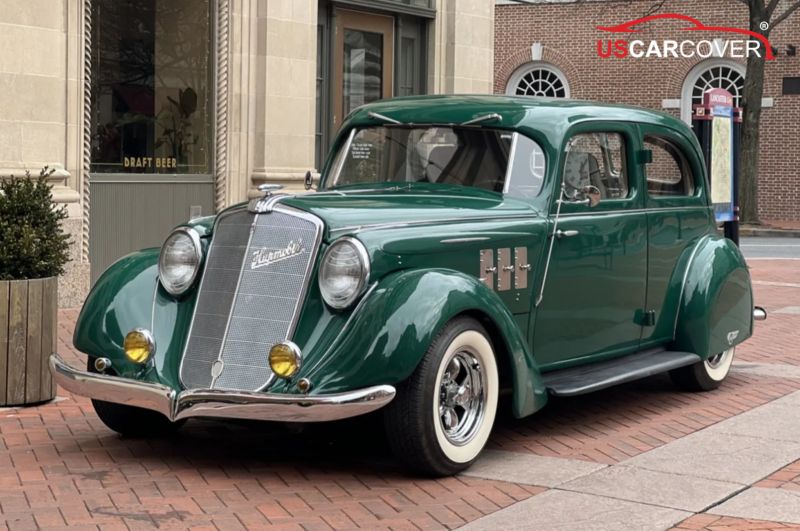
Related Articles: Hummer car cover for indoor or outdoor: choose based on needs, climate, parking context, and off-road frequency
Hupmobile: design heritage and a set of sensitive surfaces that must be protected properly
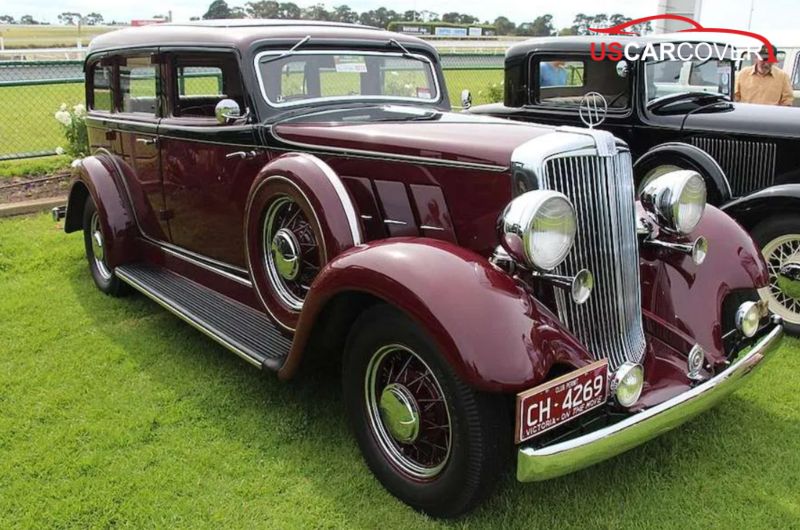
Mention Hupmobile and you recall early 20th century American design: elegant coachbuilt bodies, characterful wheel arches, large curved glass, crisp body creases, chrome and rare mascots. That beauty creates collector value, and it also brings a sensitive material system that a Hupmobile car cover must care for. Think thin lacquer or nitro paint that is soft and deeply colored, steel-base chrome that hates salty moisture, curved glass that easily shows mineral rings after condensation, vintage cloth, old leather, and wood veneer that age fast under UV and temperature and humidity swings. In the U.S., you may live in the high-sun Belt, the snow-and-salt Belt, by the coast with salty humidity, or on a windy plateau. Small mistakes in covering are enough to turn fine dust into abrasive grit or turn the covered space into a humid greenhouse. A good Hupmobile car cover therefore needs four conditions at the same time: an ultra soft liner, controlled breathability, a beading outer face, and stability in wind. Only when all four pieces work together do you truly achieve full coverage without sealing the car in.
Related Articles: Hudson car cover: Scratch protection, rain beading, fast moisture release, lasting chrome shine, fewer water spots on glass
Full coverage done right
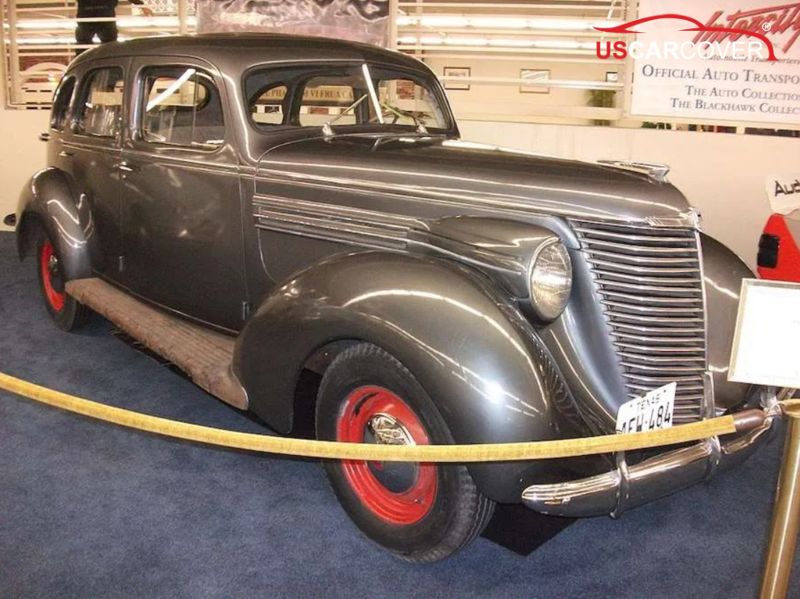
Many owners hear full coverage and think heavy cloth tied tight. That sure feeling at first often opens a chain of side effects. Vapor cannot escape, the underside stays clammy for days and the cabin keeps a musty odor. When wind gusts through, air pockets form at the nose or rear glass so the fabric balloons and collapses, and fine dust trapped between fabric and paint becomes ultra-fine sandpaper. Stiff hems press into curved glass and leave faint prints. Full coverage done right with a Hupmobile car cover means covering the car’s geometry so it stays still in wind, while the materials and construction still allow water to bead and roll away quickly and allow vapor to diffuse upward instead of being pressed against the surface.
The core is an ultra soft liner. At the fingertip it should feel smooth, with no pilling and no dye bleed when damp, so every lay-on and lift-off is a cushioned touch. The core needs real breathability with micro-pores that let moisture move naturally from the surface upward, cutting the common pattern of dry for a few hours and clammy again. The outer face should be finished to bead water, using the body’s slope to make droplets run off instead of sitting in place. Recessed seams and soft hems bury the edge so there is no stiff line pressing into curved glass or painted creases, which matters a lot on Hupmobile glass. When these four elements work together, a Hupmobile car cover finally reaches the full coverage you expect: staying still, staying dry over days, and touching softly.
Classic body shapes vary widely. Fender lines, wheel wells, side-mount spares, door handles, proud mascots. A generic size leaves extra fabric that forms air pockets. That is why a Hupmobile car cover should be selected with the right form for the model year so those pockets are suppressed by design and the cover stays put even when wind funnels through.

Related Articles: Honda car cover: rain resistant, strong UV protection, cooler cabin, durable paint and interior
Interior protection: when UV, heat, and moisture are the trio that age a cabin every day
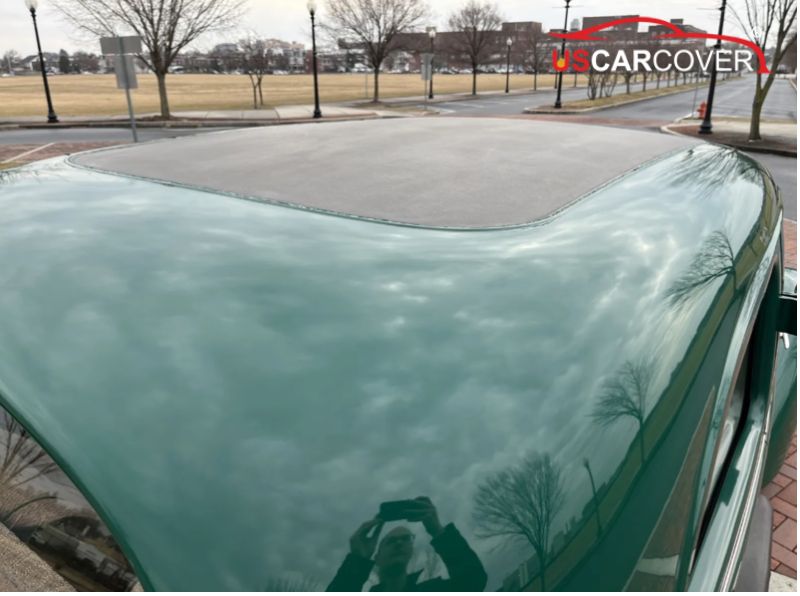
It is not only bad weather that ages interiors. Even a garage with windows, a carport, or a driveway with a canopy still deliver a trio of stressors: indirect UV, accumulated heat, and ground moisture wicking from concrete. If fabric and vintage leather repeatedly take radiation, the polymers in the fibers and adhesives break down. Wood veneer expands and contracts with humidity and temperature, leading to hairline checking. Carpet foam can hold moisture long enough to generate a stale odor.
A Hupmobile car cover that truly protects interiors solves the problem with two parallel mechanisms. First is radiation reduction. A light-colored, reflective outer face lowers cabin heat input, which slows the rate of material aging. Second is moisture release. A micro-vented core allows vapor to move outward, keeping the underside dry over days, not just dry for a few hours and damp again. Paired with sensible habits, such as brushing off large grit, letting surfaces flash-dry, then covering and cracking the cover for a few minutes after a long rain to exchange air, you will see vintage cloth and leather hold their suppleness, veneer stays flatter with fewer checks, and cabin odor remains neutral. If your interior was recently restored, a Hupmobile car cover with an ultra soft liner avoids repetitive scuffing during daily cover-on, cover-off, which is critical while surfaces are still sensitive.
Related Articles: Hillman car cover: preserve value and extend vehicle lifespan, reduce repair and maintenance costs
Mold prevention: understand the dew point so water rings and musty odor do not come back
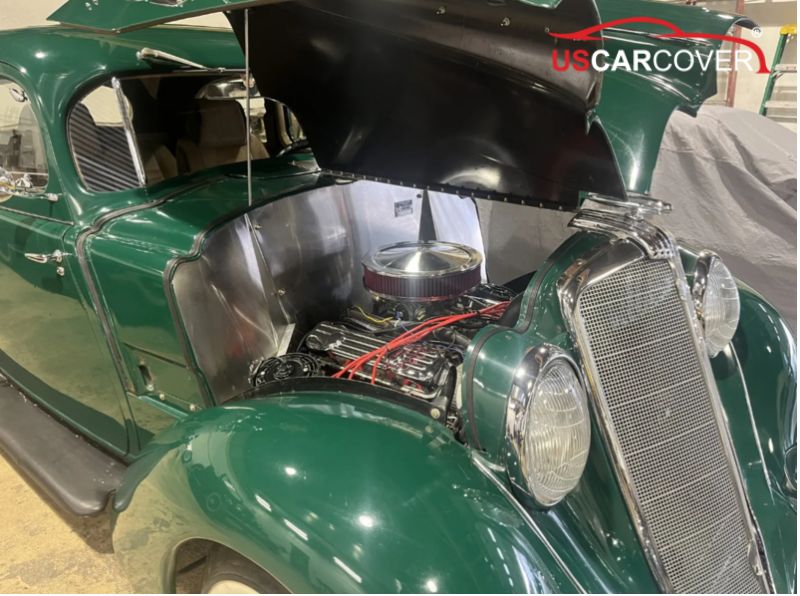
Mildew does not appear from nowhere. It forms when the dew cycle repeats and moisture is pressed against the surface. Pre-dawn temperatures fall and vapor condenses into droplets along glass edges and metal trim. If a Hupmobile car cover is airtight, those droplets are held in place between fabric and surface for many hours. The result is a faint water frame around curved glass, a musty cabin, and eventually mold spores find a foothold on vintage cloth and liners.
The correct answer is a Hupmobile car cover that both beads water well on the outer face to shorten wet time and breathes through the core so vapor moves upward. When droplets leave quickly and the underside is not pressed wet, the mold ecosystem loses its foundation. Add a tiny habit with big effect. After a long rain or a very humid night, crack the cover for a few minutes to exchange air, then close it once surfaces have settled. You will see the damp smell fade, water rings at glass edges stop returning, and the interior stay as calm as if stored in a dry vault.
Rust prevention: cut wet time and avoid salty greenhouse conditions so chrome stays bright
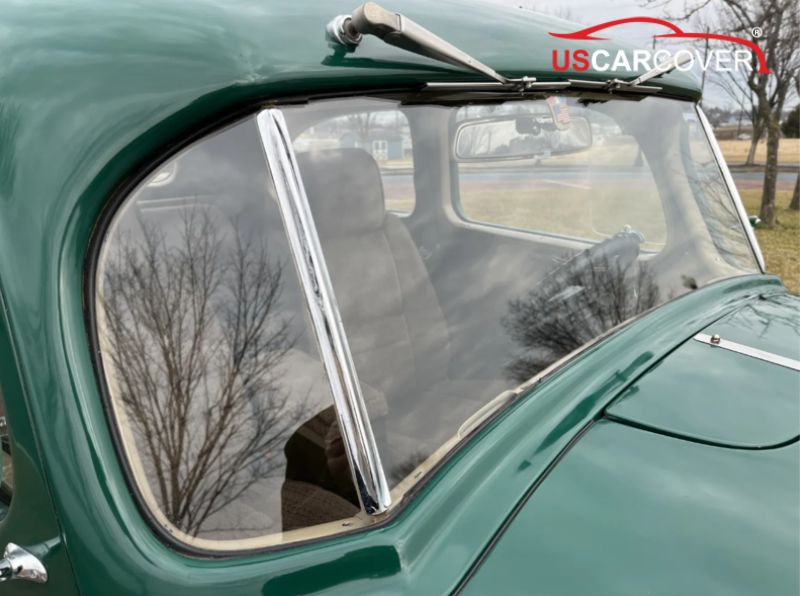
Steel-base chrome on handles, grille surrounds, and body trim on Hupmobile reacts quickly to salty moisture. Coastal salt mist and Snow Belt road salt are the usual suspects. Pitting begins when surfaces remain wet for long periods in a salty environment, especially if the cover balloons and collapses so salt particles move and rub.
A Hupmobile car cover stops rust with three clear steps. First, beading moves water off edges and trim quickly, shortening wet time. Second, breathability avoids the salty greenhouse effect under the cover. Third, stability in wind keeps the cover from moving, so salt does not rub across chrome. Each removal, give the cover a light shake so salt dust falls away before storage, and the loop is closed. Over a season you will see deeper chrome luster with fewer specks, cleaner trim edges without dull halos, and curved glass without stubborn edge rings because droplets do not sit there all night.
Related Articles: Graham car cover: long-term storage solution with ultra soft liner, recessed seams, and breathability
Indoor or outdoor: choose by your needs and U.S. climate to get it right the first time

There is no single cover that wins every scenario. The Hupmobile car cover for indoor use is made for closed garages, storage facilities, and detailing studios where the priorities are cushioned contact, cleanliness, and steady breathing. The Hupmobile car cover for outdoor use is for driveways, carports, open lots, and long trips where the priorities are UV blocking, cabin heat reduction, beading, breathability, and staying still in wind.
Sun Belt regions such as Arizona, Nevada, Texas, and Southern California make radiation and heat the top enemies. Choose a Hupmobile car cover with a light, reflective face and a breathable core and you will feel noticeably cooler cabin temps, with slower aging of black plastics, seals, fabric, veneer, and adhesives. In the Snow Belt such as Michigan, Minnesota, Wisconsin, and New York, you need strong beading, micro-venting, and a form that stays still. At the end of the season, rinse lightly, dry completely, and store in a breathable bag and the cover will be ready to perform again next year. Coastal regions such as Florida, the Gulf Coast, and the Northwest coast call for breathability first so salty moisture is not trapped. Each time you remove the cover, lightly shake off salt before storage. On high-wind plateaus in the High Plains and Rockies, pick a Hupmobile car cover that is stable in wind with recessed seams and soft hems so edges do not print onto curved glass. In tree-lined cities such as Northern California or Northeast suburbs, sap, droppings, and fine dust require a soft-lined, quick-handling cover so you are willing to use it every day.
Use the right type in the right place and you will feel the difference in your routine. Each time you open the cover, the car looks clean, glass is free of edge rings, chrome retains depth, and the interior smells neutral.
Related Articles: How to choose a GMC car cover for Urban areas, the Sun Belt, the Snow Belt, coastal regions, and high-wind plateaus
Real-world situations you often encounter: put the Hupmobile car cover into everyday life
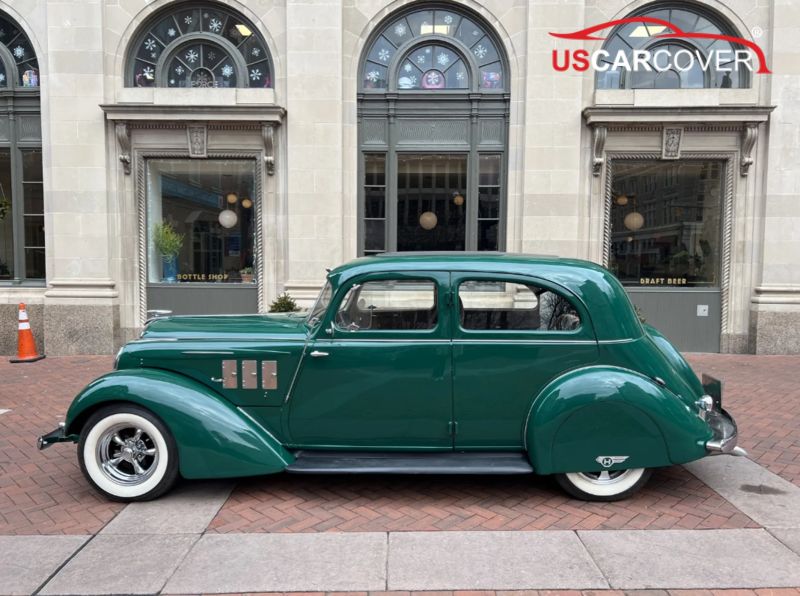
Imagine you park under a carport near a garden in a humid region. Each morning the glass edges show a faint ring, chrome looks slightly dull, and the cabin carries a hint of mustiness. After switching to a Hupmobile car cover with beading and breathability, within a few nights those rings fade because droplets no longer sit at the edge, the cabin odor eases because vapor has a way out, and chrome keeps depth because it is not trapped under salty dampness. Another situation. Long-term storage in a garage with sunny windows. Even indoors, indirect radiation can tire fabric, veneer, and old leather. Using a light indoor Hupmobile car cover that cuts radiation, plus the habit of cracking the cover for a few minutes on dry days, keeps interior aging noticeably slower. Or think Snow Belt off-season. After wet snow, an outdoor Hupmobile car cover with strong beading shortens wet time and the underside stays dry over days. At season’s end, rinse lightly, dry, and store. Next season it opens soft, clean, and ready to protect again.
Usage habits: clean, dry, and ventilated is the golden rhythm that slows aging

A great cover with poor habits still yields poor results. The golden rule with a Hupmobile car cover is clean, dry, and ventilated. When you park, spend a few dozen seconds brushing off large particles like sand, leaves, and dried mud, because those are the sandpaper when trapped between fabric and paint. If the surface is wet, allow a brief flash-dry, then cover. After a long rain, crack the cover for a short air exchange, then close it once conditions settle. When placing the cover, let the fabric fall in its natural direction, avoid dragging sideways, and adjust lightly so it stays still rather than cinching it too tight. In the morning, lift and fold neatly. If the cover is damp, dry it fully and store it in a breathable bag. Keep this rhythm for a few weeks and you will watch the aging curve slow: fewer glass rings, deeper chrome shine, richer black plastics, smoother paint with fewer swirls, and a neutral cabin smell even under sun.
Related Articles: Geo car cover: reduce maintenance, protect 90s dashboards and plastics, and preserve resale value
Where to buy a quality Hupmobile car cover
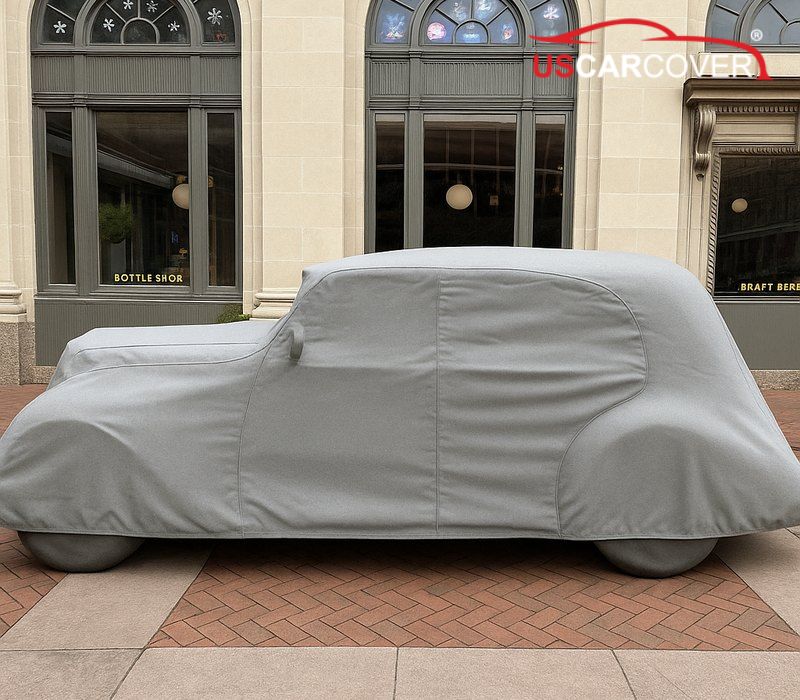
If you’re looking for a place to buy a high-quality Hupmobile car cover, reliable and perfectly suited for your classic car, USCarCover.com should be your first stop. This website specializes in Hupmobile car covers that are precisely tailored to each specific model, ensuring excellent dust, UV, scratch, and moisture protection. In addition, you can choose from various types of Hupmobile car covers – from indoor to outdoor options – depending on how you store your car. Most importantly, the USCarCover support team is always ready to help you select the most suitable Hupmobile car cover for your actual needs
Distill the value of a Hupmobile car cover into one formula: four qualities, one mechanism, one goal. The four qualities are full coverage that still breathes, interior protection from UV and temperature and humidity swings, mold prevention because the underside stays dry over days, and rust prevention by shortening wet time and avoiding salty humidity traps. The mechanism is a coordinated system of an ultra soft liner, recessed seams and soft hems, a beading outer face, and a micro-vented core inside a Hupmobile car cover that stays still in wind. The single goal is to keep the car looking new. When you make the cover your Hupmobile car’s second skin, you will see fewer glass rings, deeper chrome shine, richer black plastics, flatter and smoother paint, and a neutral-smelling cabin through cycles of sun, rain, coastal humidity, and winter snow. It is a small investment that drives a large difference in both appearance and collector value over time.
